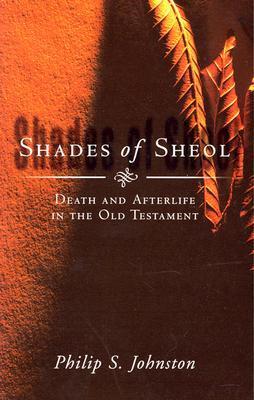 “Good literature is often evocative, using imagery and metaphor to stimulate the imagination rather than prosaic description to satisfy the intellect. This has the great advantage of enabling the reader to enter creatively into the experience of the author, and more than outweighs the resultant imprecision and possible misunderstanding. But of course imagery by its very nature cannot be pressed too far. Old Testament descriptions of death are often imaginative and evocative rather than prosaic and specific. This allows us to understand the ancient Israelites’ attitudes to death more than their beliefs about it. Nevertheless, the imagery and metaphor used inevitably reflect certain beliefs, and it is useful to attempt to trace these.
“Good literature is often evocative, using imagery and metaphor to stimulate the imagination rather than prosaic description to satisfy the intellect. This has the great advantage of enabling the reader to enter creatively into the experience of the author, and more than outweighs the resultant imprecision and possible misunderstanding. But of course imagery by its very nature cannot be pressed too far. Old Testament descriptions of death are often imaginative and evocative rather than prosaic and specific. This allows us to understand the ancient Israelites’ attitudes to death more than their beliefs about it. Nevertheless, the imagery and metaphor used inevitably reflect certain beliefs, and it is useful to attempt to trace these.
Further, in all human life, concepts from the cultural background may be taken up and used without acceptance of their underlying ideology. Today people from all walks of life talk of an Achilles’ heel, Cupid’s arrows, or the fates, or use adjectives like ‘titanic’ and ‘promethean,’ without believing the Greek mythology which underlies these terms. Christians have often celebrated Halloween as a harmless folk festival, without worrying about its roots. Thus Israel’s use of certain terms need not imply acceptance of the mythology associated with [it] by other peoples. Neighbouring cultures used terms like death, pestilence and plagues to represent deities, but the Hebrew usage does not necessarily echo this.” – pg 25
“The most important Hebrew term for the underworld is clearly…‘Sheol’… for several reasons: (a) It is the most frequent, occurring sixty-six times. (b) It always occurs without the definite article (‘the’), which implies that it is a proper name. (c) It always means the realm of the dead located deep in the earth, unlike other terms which can mean both ‘pit’ and ‘underworld.’” -pg 70
Shades of Sheol: Death and Afterlife in the Old Testament by Philip S. Johnston